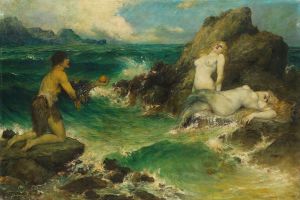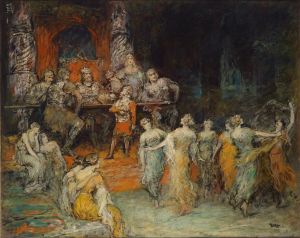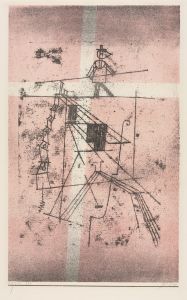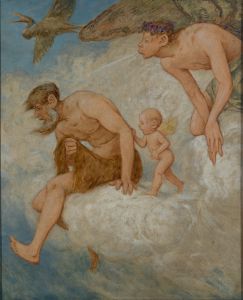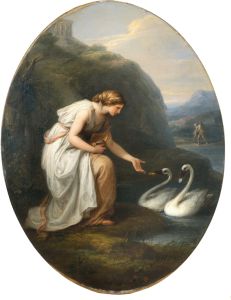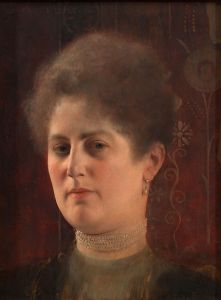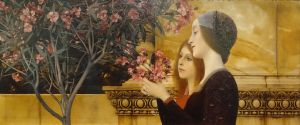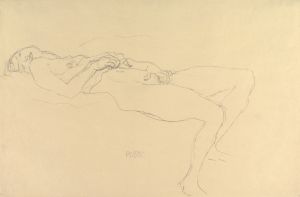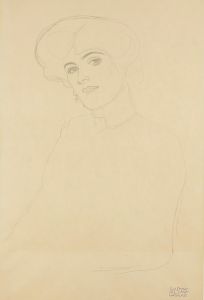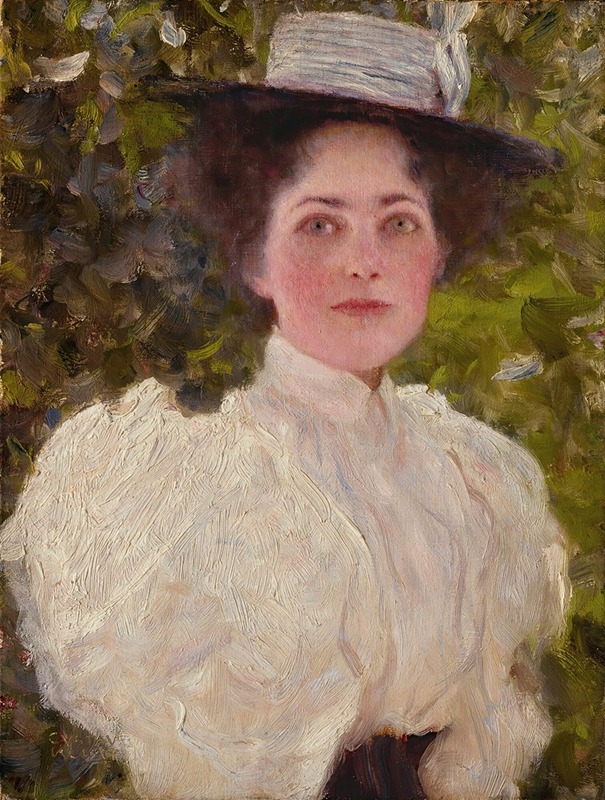
Mädchen im grünen
A hand-painted replica of Gustav Klimt’s masterpiece Mädchen im grünen, meticulously crafted by professional artists to capture the true essence of the original. Each piece is created with museum-quality canvas and rare mineral pigments, carefully painted by experienced artists with delicate brushstrokes and rich, layered colors to perfectly recreate the texture of the original artwork. Unlike machine-printed reproductions, this hand-painted version brings the painting to life, infused with the artist’s emotions and skill in every stroke. Whether for personal collection or home decoration, it instantly elevates the artistic atmosphere of any space.
"Mädchen im grünen" (Girl in Green) is a painting by the Austrian symbolist painter Gustav Klimt. Klimt, born on July 14, 1862, in Baumgarten, near Vienna, is renowned for his distinctive style that combines symbolism, eroticism, and a unique use of color and gold leaf. He is one of the most prominent members of the Vienna Secession movement, which sought to break away from traditional academic art and explore new artistic expressions.
"Mädchen im grünen" was created in 1899, during a period when Klimt was transitioning from his earlier, more academic style to the more decorative and symbolic approach for which he is best known. This painting is a fine example of Klimt's early portrait work, showcasing his skill in capturing the delicate features and expressions of his subjects.
The painting depicts a young girl dressed in a green dress, standing against a richly patterned background. The girl's attire and the intricate details of the background reflect Klimt's interest in fashion and textiles, which is a recurring theme in his work. The use of green in the dress is particularly striking, as it contrasts with the more subdued tones of the background, drawing the viewer's attention to the central figure.
Klimt's portraits often feature women, and "Mädchen im grünen" is no exception. His fascination with the female form and his ability to convey the inner life and emotions of his subjects are evident in this work. The girl's pose and expression suggest a sense of innocence and introspection, which is enhanced by the soft, almost ethereal quality of the painting.
The background of "Mädchen im grünen" is adorned with intricate patterns and motifs, which are characteristic of Klimt's style. These decorative elements not only serve to frame the central figure but also add a layer of complexity and depth to the composition. Klimt's use of patterns and textures creates a sense of harmony and balance, making the painting visually engaging.
While "Mädchen im grünen" may not be as widely recognized as some of Klimt's other works, such as "The Kiss" or "Portrait of Adele Bloch-Bauer I," it remains an important piece in his oeuvre. It provides insight into his development as an artist and his exploration of new artistic techniques and themes.
Klimt's work has had a lasting impact on the art world, influencing numerous artists and movements. His innovative approach to portraiture and his ability to blend realism with decorative elements have made his paintings timeless and highly regarded. "Mädchen im grünen" is a testament to Klimt's talent and his contribution to the world of art.
Today, Gustav Klimt's paintings are celebrated for their beauty, complexity, and emotional depth. "Mädchen im grünen" continues to be appreciated by art enthusiasts and scholars alike, serving as a reminder of Klimt's enduring legacy and his unique vision as an artist.






